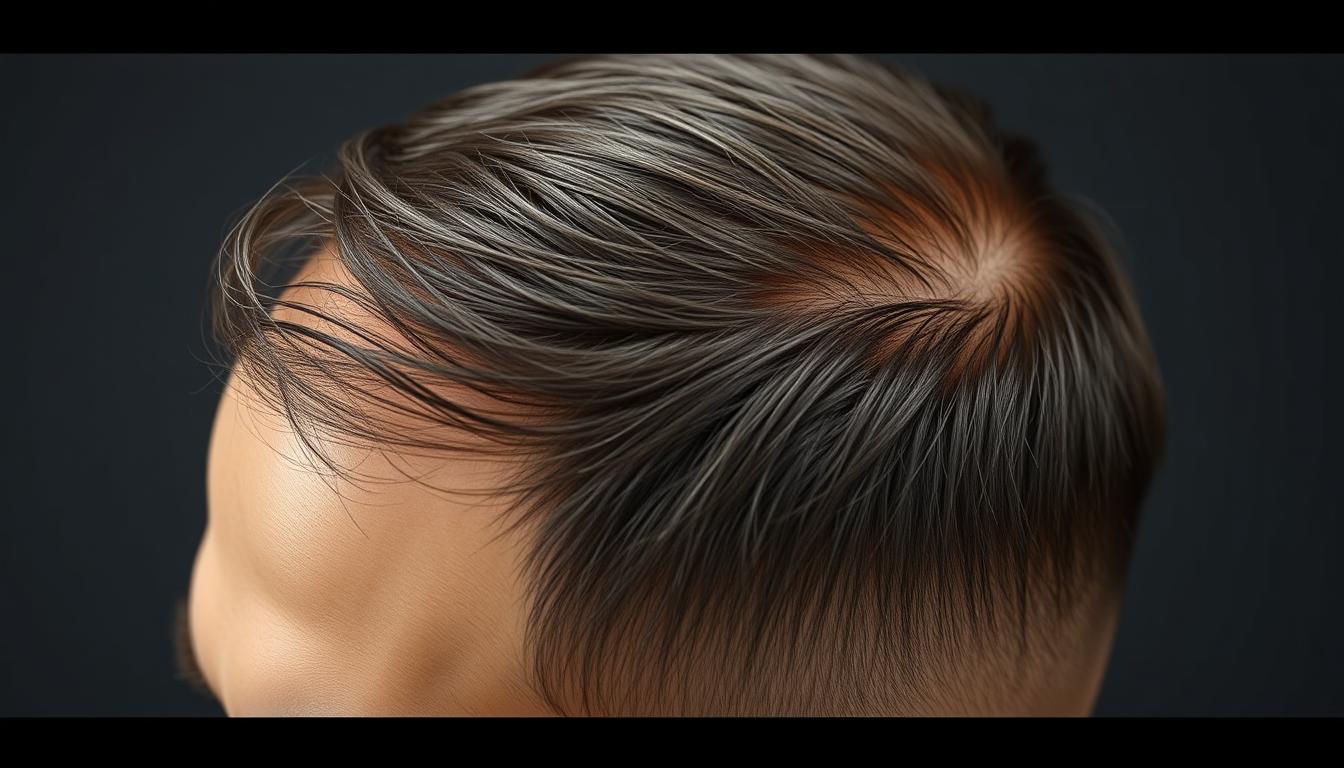At Cosmedica Clinic, a personalized approach is taken to address each patient’s hair loss situation. By creating a defined front hairline, particularly natural results and hair growth can be achieved.
The outcome of a hair transplant surgery varies from person to person, depending on factors such as donor hair quality and the extent of hair loss. A successful procedure relies on the surgeon’s ability to replicate the natural angle of hair growth.
Modern hair restoration techniques have revolutionized the treatment of hair loss, offering permanent solutions with natural-looking results. Patients can expect visible progress over several months as their hair grows and transforms.
Key Takeaways
- Personalized approach to hair transplant procedures ensures natural-looking results.
- The success of a hair transplant depends on factors like donor hair quality and surgical expertise.
- Visible progress occurs over several months as hair grows and transforms.
- Modern hair restoration techniques offer permanent solutions for hair loss.
- A successful transplant can dramatically improve a patient’s appearance and confidence.
Understanding Hair Transplant Transformations
The journey to a new hairline begins with understanding the intricacies of hair transplant transformations. A hair transplant is a surgical procedure that involves moving hair follicles from one part of the body to another, typically to restore a natural-looking hairline.
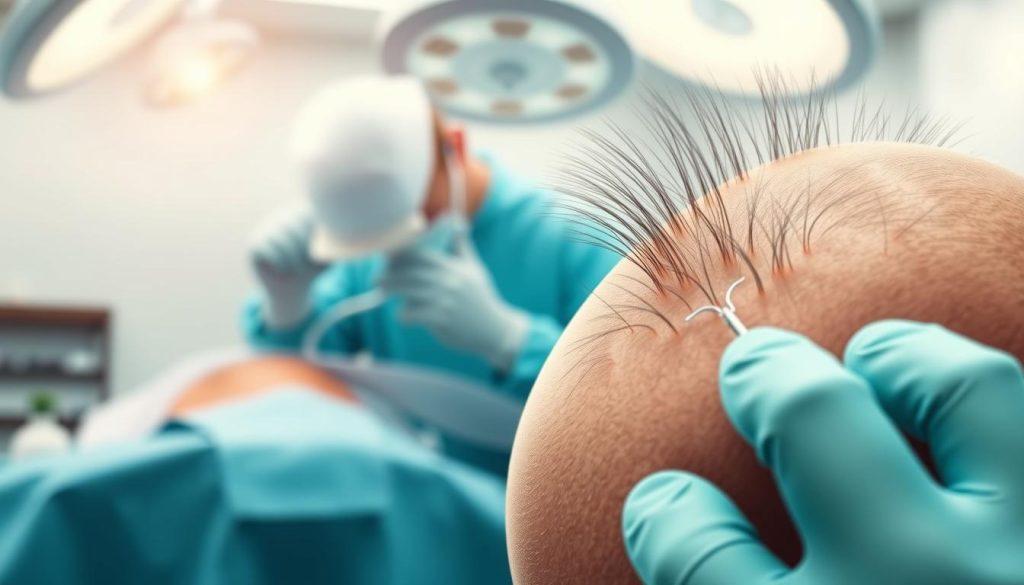
The Science Behind Hair Restoration
Hair restoration is a complex process that involves not just the transplantation of hair follicles, but also an understanding of the patient’s hair loss pattern, the quality and quantity of donor hair, and the desired outcome. The strategic placement of grafts is crucial, with finer single-hair follicular units placed along the hairline for a soft, natural appearance.
The procedure requires a skilled surgeon who can balance technical precision with aesthetic considerations to achieve a natural-looking result. The number of grafts required is determined during the consultation, where the future hairline is designed in consultation with the patient.
What Makes a Successful Hair Transplant
A successful hair transplant creates results that appear completely natural, with appropriate hairline design that complements the patient’s facial features, age, and ethnicity. Key factors include proper graft distribution and angulation that mimics natural hair growth patterns, significantly impacting the final aesthetic outcome of the procedure.
| Factor | Importance | Impact on Outcome |
|---|---|---|
| Graft Placement | High | Natural Appearance |
| Surgeon’s Expertise | Critical | Aesthetic Outcome |
| Post-Procedure Care | Essential | Healing and Results |
As highlighted by experts, “A successful hair transplant is not just about moving hair from one place to another; it’s about creating a natural-looking hairline that enhances the patient’s appearance.” The density and appearance of the transplanted hair are critical to the overall success of the procedure.
Real Before and After Hair Transplant Results
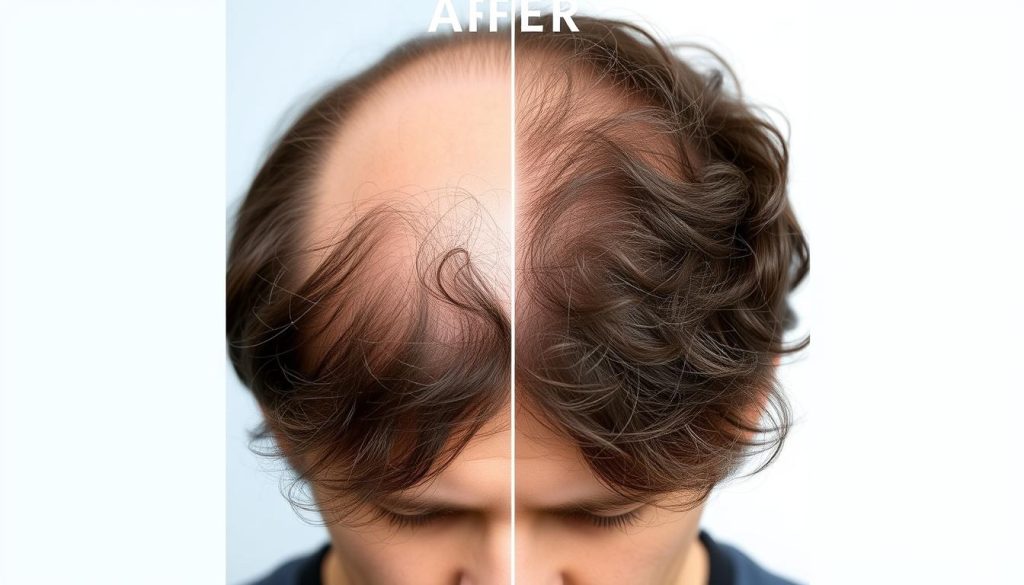
Hair transplant transformations can be truly life-changing, offering patients a renewed sense of confidence. For individuals experiencing hair loss, a hair transplant can be a highly effective solution, as evidenced by real before and after pictures.
Hairline Restoration Transformations
Restoring a natural-looking hairline is a top priority for patients undergoing hair transplant surgery. By transplanting high-quality grafts, surgeons can recreate a natural hairline that frames the face and enhances overall appearance.
The before and after pictures of hairline restoration showcase dramatic transformations, with patients experiencing significant improvements in hair density and overall appearance.
Crown Area Restoration Results
The crown area is a common region for hair loss, and restoring this area can be challenging. However, with the use of advanced techniques and careful planning, surgeons can achieve natural-looking results that meet patient expectations.
Before and after pictures of crown area restoration demonstrate the potential for significant improvements in hair density and overall appearance.
Full Head Transplant Outcomes
If you are suffering from total baldness, you’ll need a hair transplant operation to implant hair on your entire head. For a full head hair transplant, you’ll need between 4,000 and 6,000 grafts. The number of grafts required will depend on the quality of your donor area hair.
- Full head transplant procedures represent the most comprehensive approach to hair restoration, typically requiring between 4,000-6,000 grafts distributed across multiple sessions to achieve satisfactory coverage.
- Before and after pictures of full head transplants showcase dramatic transformations, with patients progressing from advanced baldness (Norwood 6-7) to natural-looking hair coverage throughout the scalp.
- These extensive procedures demand careful planning to ensure donor area preservation while maximizing coverage in recipient areas, often necessitating multiple surgical sessions spaced several months apart.
Timeline of Hair Transplant Results
Understanding the timeline of hair transplant results is crucial for managing patient expectations. Hair transplant surgery is a process that requires patience, as the full results unfold over several months.
Immediate Post-Procedure Appearance
Immediately after the procedure, the transplanted area may appear red, swollen, and have scabs. This is a normal part of the healing process. Patients should follow their surgeon’s advice to ensure proper healing and minimize complications.
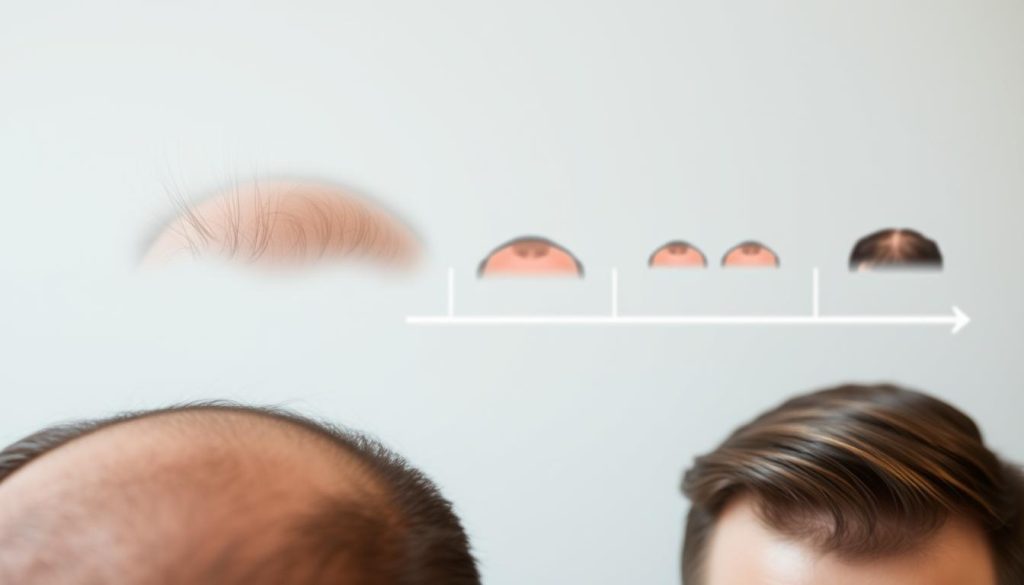
3-6 Month Progress
Between 3 to 6 months post-transplant, patients may start to notice the initial signs of hair growth. At this stage, the transplanted hair may still be thin and not fully grown in. It’s essential to be patient, as the hair continues to mature.
Final Results: 12-18 Months
The final results of a hair transplant become apparent between 12 to 18 months after the procedure. By this time, the transplanted hair has fully grown in and can be styled like natural hair. Before and after pictures at this stage showcase the mature results that patients can expect to maintain long-term.
| Timeframe | Expected Results |
|---|---|
| 0-1 Month | Redness, swelling, and scabs; initial healing |
| 3-6 Months | Initial signs of hair growth; hair still thin |
| 12-18 Months | Full growth; natural appearance; final results |
By 12 months post-procedure, approximately 80-90% of transplanted hairs have emerged and begun to display their permanent characteristics. Patients report high satisfaction rates at the 12-18 month mark, as they can style their hair normally, with the transplanted hair being indistinguishable from their native hair.
The final results phase reveals the true artistic success of the procedure, with natural hairline integration and appropriate density becoming fully apparent. Before and after comparisons provide compelling evidence of the procedure’s effectiveness, with many patients experiencing significant improvements in quality of life and self-confidence.
Factors Influencing Hair Transplant Results
The success of a hair transplant procedure depends on several key factors. Understanding these elements can help patients have realistic expectations about their hair restoration journey.
Donor Hair Quality and Quantity
The quality and quantity of donor hair play a crucial role in determining the outcome of a hair transplant. Patients with a sufficient supply of healthy donor hair tend to achieve more satisfactory results. The characteristics of the donor hair, such as texture, color, and thickness, also influence the final appearance of the transplanted hair.
Surgical Technique and Expertise
The surgical technique and the expertise of the surgeon are critical factors that influence hair transplant results. Advanced techniques, such as Follicular Unit Extraction (FUE) and Follicular Unit Transplantation (FUT), require a high level of skill and precision. A surgeon with extensive experience in hair restoration can significantly enhance the likelihood of successful results.
Post-Procedure Care and Maintenance
Post-procedure care and maintenance are vital for ensuring the longevity and natural appearance of transplanted hair. Following the advice of a hair restoration specialist in the crucial first few weeks after surgery can help ensure that the transplanted hair remains healthy. Proper care and maintenance significantly influence both the short-term healing process and the long-term quality of results.
To maximize results, many surgeons recommend adjunctive treatments such as minoxidil, finasteride, or low-level laser therapy. These treatments can enhance hair growth and protect non-transplanted hair from future hair loss. Long-term maintenance often requires ongoing management of progressive hair loss in non-transplanted areas.
Different Hair Transplant Techniques and Their Results
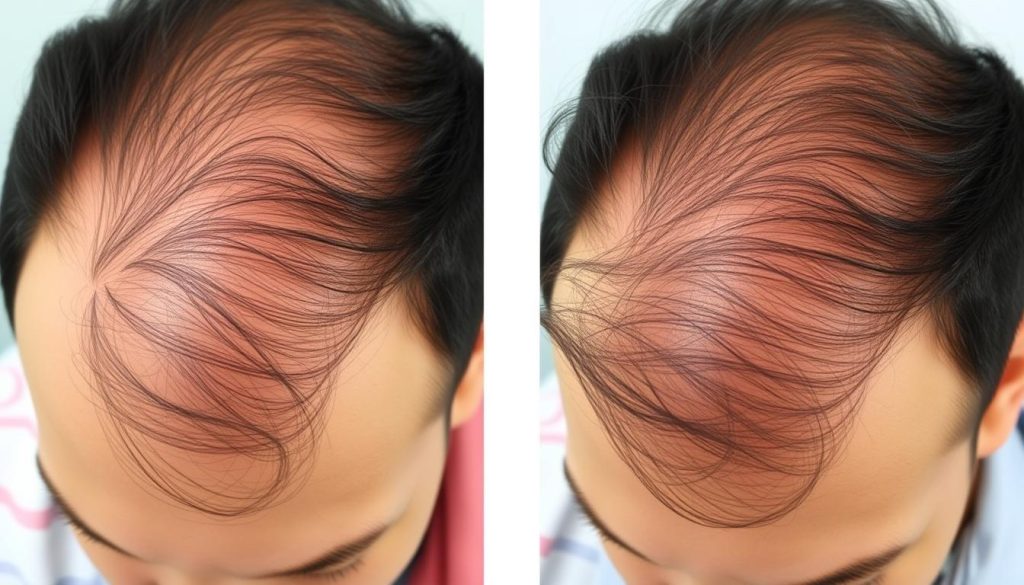
The quest for a natural appearance has led to the development of various hair transplant techniques, each with its unique benefits and outcomes. Two of the most popular methods are Follicular Unit Extraction (FUE) and Follicular Unit Transplantation (FUT).
Follicular Unit Extraction (FUE) Results
FUE is a modern technique that involves extracting individual hair follicles from the donor area using a specialized tool. This method allows for a more precise and minimally invasive procedure, resulting in less scarring and a faster recovery time. Patients who undergo FUE can expect natural-looking results, with the transplanted hair growing in the same direction and angle as their natural hair.
Follicular Unit Transplantation (FUT) Outcomes
FUT, also known as strip harvesting, involves removing a strip of hair-bearing skin from the donor area, which is then dissected into individual follicular units. This technique allows for a larger number of grafts to be transplanted in a single session, making it suitable for patients with extensive hair loss. FUT can produce excellent results, with a high density of transplanted hair and a natural-looking hairline.
Advanced Techniques for Natural-Looking Results
Advanced hair transplantation techniques focus on recreating the natural architecture of hair growth, with meticulous attention to hairline design, hair direction, angulation, and distribution patterns that mimic nature. The development of custom-cut blades and implanters has allowed surgeons to create recipient sites that precisely control the depth, angle, and direction of transplanted grafts, resulting in more consistent and natural-appearing outcomes.
Combination approaches that utilize different graft sizes strategically throughout the scalp—with single-hair grafts at the hairline and multi-hair grafts behind for density—have become standard practice for achieving natural-looking results. The incorporation of trichophytic closure techniques in FUT and smaller punch sizes in FUE represents ongoing refinements that continue to improve the naturalness and minimize the detectability of modern hair transplant procedures.
Hair Transplant Results by Graft Count
The number of grafts used in a hair transplant procedure significantly impacts the outcome, with varying results depending on the graft count. For a full head hair transplant, the graft count can range between 4,000 and 6,000 grafts, depending on the quality of the donor hair and the extent of hair loss.
1500-2000 Grafts: Before and After
Procedures utilizing 1500-2000 grafts are suitable for individuals with limited hair loss, typically addressing minor balding or thinning areas. These graft counts can effectively restore a natural-looking hairline or add density to specific areas of the scalp. Before and after pictures of patients who have undergone this procedure often show noticeable improvements in hair coverage.
2500-3500 Grafts: Before and After
A graft count of 2500-3500 is commonly used for more extensive hair restoration, targeting both the hairline and the crown. This range allows for a more comprehensive coverage, addressing moderate to severe hair loss. Patients who have received 3,500 grafts, for instance, have reported significant improvements, with one patient achieving a natural appearance after a two-day procedure.
“The results achieved with 4000+ graft procedures illustrate the remarkable capabilities of modern hair transplantation, with many patients achieving transformations that allow them to style their hair naturally without relying on concealment techniques.”
4000+ Grafts: Transformations for Extensive Hair Loss
For individuals experiencing advanced baldness (Norwood 5-7), procedures utilizing 4000+ grafts offer the most comprehensive approach to hair restoration. These extensive procedures require meticulous planning and multiple surgical days but result in dramatic transformations, restoring not just hair but also confidence and social comfort. Before and after comparisons demonstrate the life-changing impact of these procedures.
| Graft Count | Hair Loss Coverage | Procedure Complexity |
|---|---|---|
| 1500-2000 | Minor balding or thinning | Less complex |
| 2500-3500 | Moderate to severe hair loss | Moderately complex |
| 4000+ | Advanced baldness | Highly complex |
Taking the Next Step Toward Hair Restoration
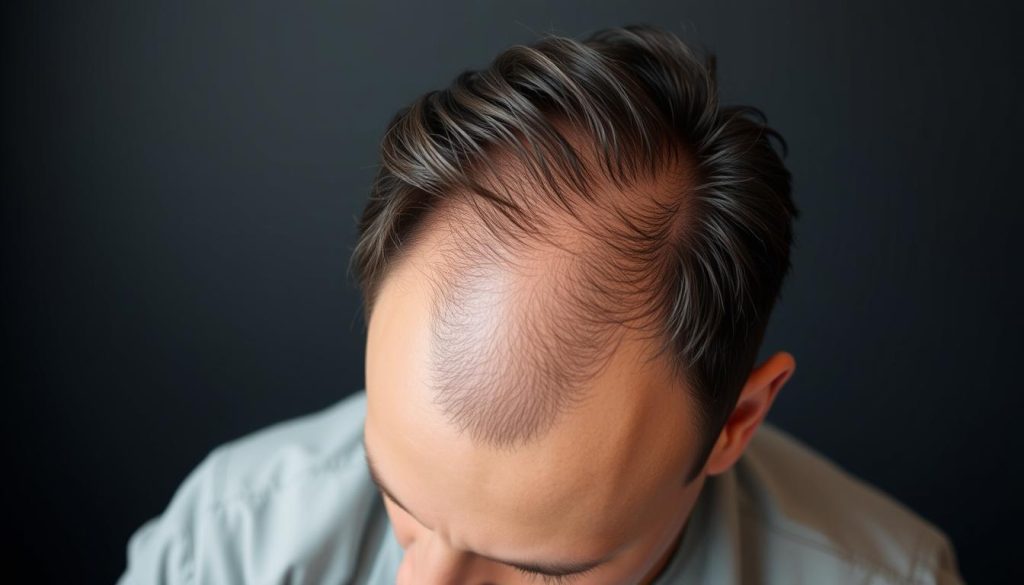
The path to regaining a full head of hair begins with a comprehensive consultation that includes a thorough evaluation of your hair loss pattern, donor area capacity, and personalized treatment options tailored to your specific needs.
At Cosmedica, we pride ourselves on providing an honest and caring atmosphere where patients can feel comfortable discussing their hair restoration goals. Modern hair transplant clinics offer advanced diagnostic tools, including digital microscopy and computerized mapping, to accurately assess hair density, miniaturization patterns, and donor area potential before recommending a specific procedure.
Patients considering hair restoration should research thoroughly, examining before and after pictures of the surgeon’s previous work, particularly cases similar to their own hair loss pattern and characteristics. A personalized treatment plan may include surgical hair transplantation, medical therapies (such as finasteride or minoxidil), or combination approaches designed to both restore lost hair and prevent further thinning.
The decision to proceed with hair restoration represents a significant investment in self-confidence and appearance, with most patients reporting high satisfaction rates and considering their procedure among the most worthwhile personal investments they’ve made. Realistic expectations remain crucial to satisfaction with hair transplant results, with the best outcomes achieved when patients understand both the possibilities and limitations of modern hair transplantation for their specific situation.
FAQ
What is the Follicular Unit Extraction (FUE) technique?
FUE is a hair restoration method where individual follicular units are extracted from the donor area and transplanted to the balding or thinning areas of the scalp, resulting in a natural-looking hairline.
How long does it take to see the final results of a hair transplant?
The final results of a hair restoration procedure can be seen within 12-18 months after the treatment, as the transplanted hair grows and matures.
What factors influence the outcome of a hair transplant?
The quality and quantity of donor hair, the expertise of the surgeon, and post-procedure care and maintenance are crucial factors that influence the success of a hair restoration treatment.
Can I achieve a full head of hair with a hair transplant?
Yes, a full head hair transplant can be achieved with a sufficient number of grafts, typically ranging from 2000 to 4000+ grafts, depending on the extent of hair loss and the desired density.
How many grafts are needed for a receding hairline?
The number of grafts required for a receding hairline can vary, but typically ranges from 1500 to 2500 grafts, depending on the severity of the hair loss and the desired outcome.
Is FUE hair transplant a painful procedure?
The FUE hair transplant procedure is typically performed under local anesthesia, ensuring minimal discomfort during the treatment. Some patients may experience mild discomfort or soreness after the procedure.
How do I care for my transplanted hair?
Post-procedure care for transplanted hair involves gentle washing and conditioning, avoiding harsh chemicals or excessive heat styling, and following the surgeon’s specific instructions for optimal hair growth and maintenance.
